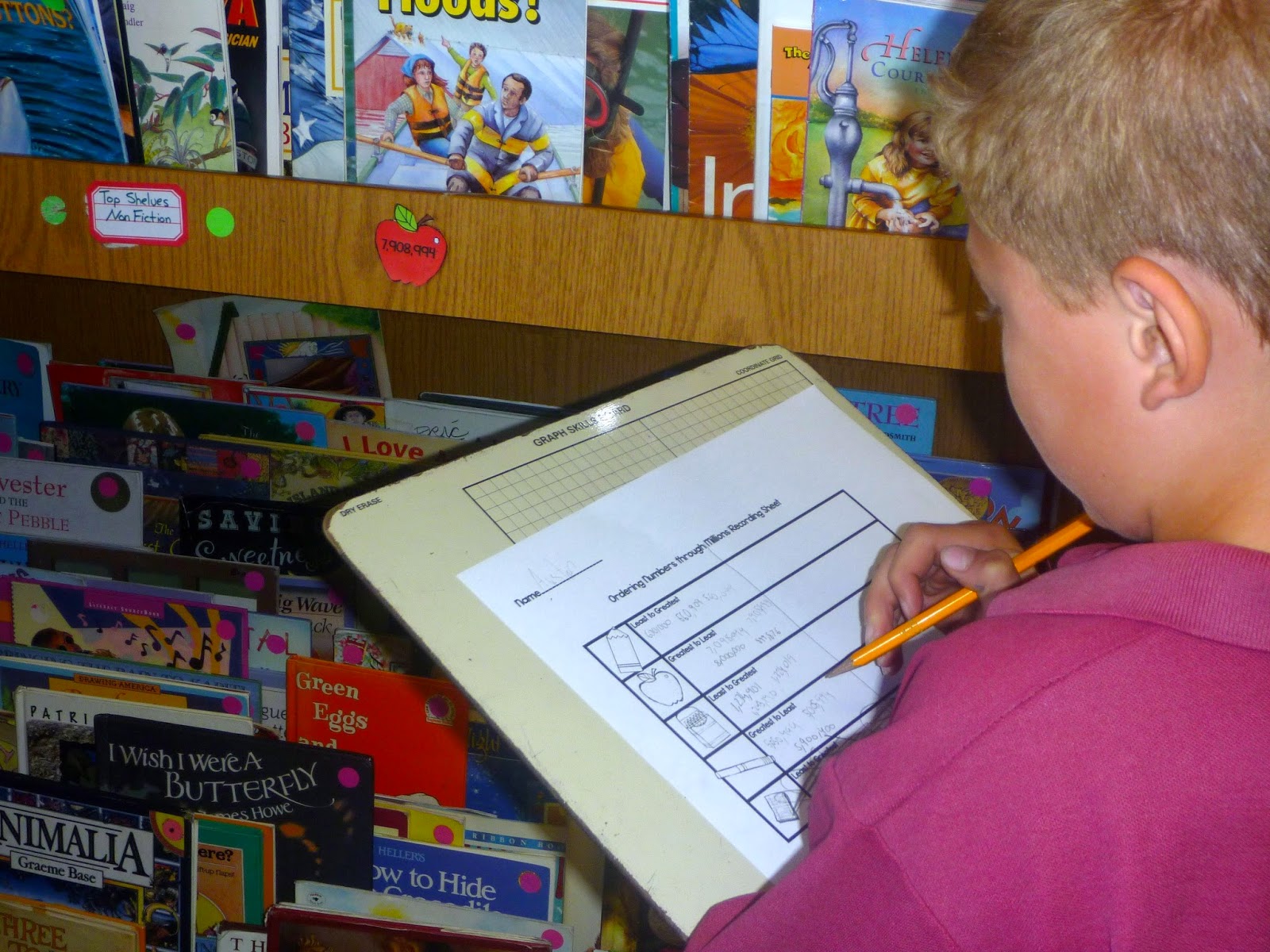Last night was Open House at my school, so I thought I'd give a peek into some of the projects we have accomplished this year.
Here is how everything looked right before the doors opened:
As we are getting closer to the end of the year, some of my students want to be a bit chattier, so I have transitioned from my regular group seating, to this paired stadium seating. I really like it because it gives students an easier view of the front of the classroom and less distractions, but I am also able to continue incorporating lots of pair-shares and group work. I have my students trained to move their desks back into a group arrangement in under 20 seconds, so we do that for times where I have larger group work planned.
Anyways, I thought I would show you some of the projects on display a bit more close up.
This is an Element project that I created this year, and that I really love. After learning all about elements, students were assigned an element from the periodic table based on their class number. They then researched their element, and created these standing displays based on their research. Each child became an expert on their element and then presented it to the class. The rest of the class took notes, and were therefore able to learn about many other elements as well.
This is a "Who am I?" descriptive writing paragraph that my students made. This is another craft that I created. The students wrote their paragraph on the first page of the magnifying glass, and then drew a picture of what they were describing on the second page. We have been really focusing on nonfiction writing and descriptive writing, and this was a fun cumulating craft/writing assignment.
Whenever possible, I like to get my students to create while they are learning, even if that simply means coloring and labeling. When they create for themselves, I find that their much more likely to retain the information. In Science, one of our units was on the lithosphere, and one of the first things we learned about was the layers of the Earth. This simple paperplate labeling activity was a big hit as a part of that lesson. The color is based on the heat of the layers, not what they actually look like, obviously :-).
On their desks, students also had their persuasive essays for their parents to read. Students could either argue for or against our uniform policy. I structure our persuasive essays fairly heavily, and this causes my students to be able to write quite sophisticated essays. This unit takes a long time, both for my students and for me. Individually writing feedback for both the rough and final drafts takes a looooong time, but I love to do it, because the improvement is so great to see.
This is pretty self-explanatory. Most teachers end up doing an activity like this when introducing fractions. What can I say? It's a great one! It really helps students get the concept of fractions conceptually, and again, they are able to create.
Another Science unit we have done this year is on the troposphere. After students learned about the four main types of clouds (stratus, cirrus, cumulus, and nimbus), they created their own Cloud books. After they wrote a paragraph on each cloud, they made paper representations of the clouds.
One fun thing our cloud unit has brought to my classroom, is that we now daily decide what kind of clouds are in our sky in the morning. It has become a permanent part of our morning routine, and students consistently remember to check the sky prior to coming into the classroom. This just takes one minute, and keeps this vocabulary and understanding fresh in their minds. I've actually been super impressed with how their vocabulary has grown by doing this. They have even started to use the complex prefixes scientists use in order to differentiate different clouds. Just today, one student said this "I think that we have cirrostratus clouds today, because they are foggy and gray just like stratus clouds and cover the sky, but they look like they are super high up, and stratus clouds are usually low."
Before teaching this unit, I didn't even really know the prefixes, and now they are using them better than me!
Well, that's it for now. Hopefully I don't wait too long in between now and the next post. I have so many more things to share!




























